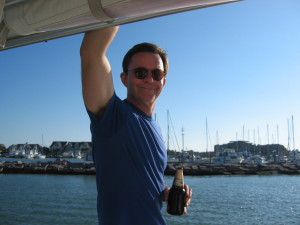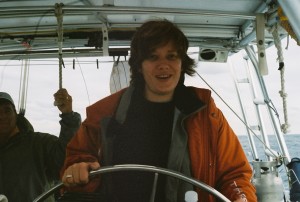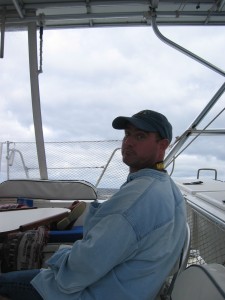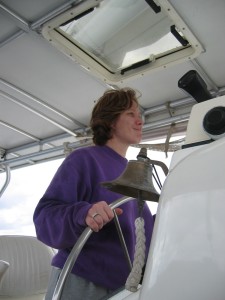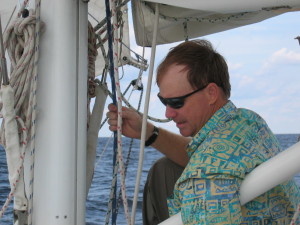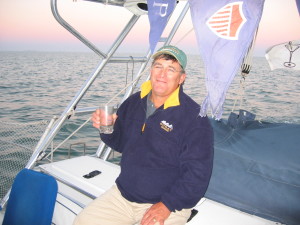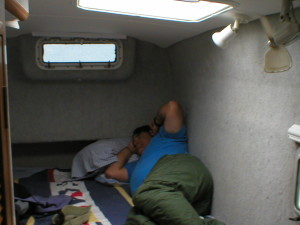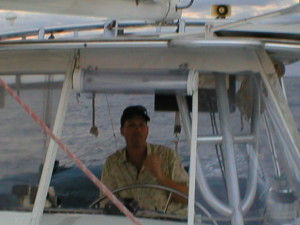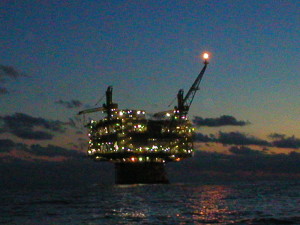1st Gulf Crossing Aboard “Double Wide”
Best Laid Plans…
Our original plan was to leave Double Wide in the Florida Keys until the spring and to fly back for several short cruises, but after stressing over finding safe, affordable marinas, we decided to just bring her home and December was the soonest opportunity we had to make it happen. The first task was to put together a crew and finding people that are willing/able to potentially miss Christmas with their families, turned out to be a bit of a task.
The Crew
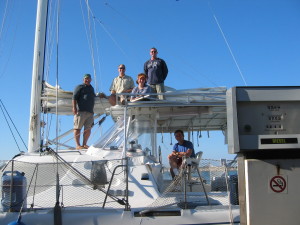 Knowing that we’d be making a mid-December crossing, I had to enlist people with full disclosure: It would almost certainly be a rough crossing and I couldn’t guarantee that we would make it home before Christmas. In the end, I was able to put together a good group to make the crossing.
Knowing that we’d be making a mid-December crossing, I had to enlist people with full disclosure: It would almost certainly be a rough crossing and I couldn’t guarantee that we would make it home before Christmas. In the end, I was able to put together a good group to make the crossing.
Mark Green is a Florida native that responded to an internet post I placed on a sailing web site. Mark had crewed on several other passages up and down the east coast, loved being offshore, but doesn’t own a boat, so hitching rides like this works well for him.
Morgan Taylor is my niece and grew up sailing on the Texas coast with the family. She had spent some time offshore, but had never done more than day sails in the Gulf.
Steve, a house painter from San Antonio, was putting up Christmas lights for my wife and through conversation with Michelle, learned that I was looking for crew and jumped at the chance to make a crossing.
Bill Baumann is my good friend and backpacking buddy from San Antonio. His wife was a sailor and she and I conspired to get him to make the crossing, even though he had very little sailing experience.
The Details
It is important to remember that my prior experience on this particular boat was a total of 5 days spent moving the boat from Fort Lauderdale to the west side of Tavernier Key in November. Sailing the boat was a piece of cake, but the myriad boat systems were driving me crazy! With manual piled in front of me on the salon table, read and soaked up everything possible.
Before we left the dock in Tavernier, I put new flex-o-fold props on the sail drives, using a scuba tank. The replacement took over an hour, working underwater, and all was good, until I put the engines in gear. The old props were pitched opposite of the new props and the result was that on the starboard engine, forward and reverse were now opposite. This would pose some challenge when attempting to maneuver, but wouldn’t delay the trip.
The next challenge we had was the auto pilot (or lack thereof). The hydraulics would engage, but any pressure would cause it to error out. I had been led to believe that it was an electrical problem, so I assumed I could track it down, but that wasn’t the case and we ended up having to hand steer the entire trip (which proved interesting — more on that later).
With crew and supplies aboard, we were finally ready to cast off just after dawn on December 17. The first part of the trip would require us to cross Florida Bay, which spans the southern tip of Florida and is infected with crab traps and their related buoys. Thankfully, we crossed the bay in daylight because even when we could see the buoys, we managed to snag several. By nightfall, we were in the open waters of the Gulf of Mexico and on our way.
That first evening was a great learning experience for the crew. Though everyone had some experience at the helm, only Mark and I had done any sailing offshore at night. When you’re looking out into complete blackness with only a compass to steer by, it is very easy to become disoriented. For example, on the first night out, I was resting in the main salon. From the settee, I could see the navigation system, so I would occasionally take a quick look to make sure we were on course. At one point, I awoke to find that the helmsman (name protected to protect her innocence) had somehow managed to go off course by 180 degrees and was headed back to Florida! Where’s that autopilot when you need it?
The first couple of days were perfect: South/Southeast breeze, blowing 15-10 kts with clear skies. On day three, we were hit by a frontal system and had 12-15 foot seas and winds up to 45 knots for a time. I’m pleased to say that Double Wide handled the weather beautifully under double reefed main and the jib. Though it was quite cool, we were dry and relatively comfortable back in the cockpit. During a 24 hour period, we made 210 nautical miles.
The weather settled within 30 hours and the last few days were splendid. The crew settled into a good rhythm and the time flew by. With Bill cooking, we had some fantastic meals and the entire crew made the trip a pleasure.
We made the Port Aransas jetties at mid-afternoon on December 23 and after a short stop in Port Aransas for beer and ice, we continued on to the Corpus Christi City Marina and tied up at the dock just before sunset.
We had a fantastic trip and Double Wide performed fantastically. I couldn’t ask for a better crossing.
